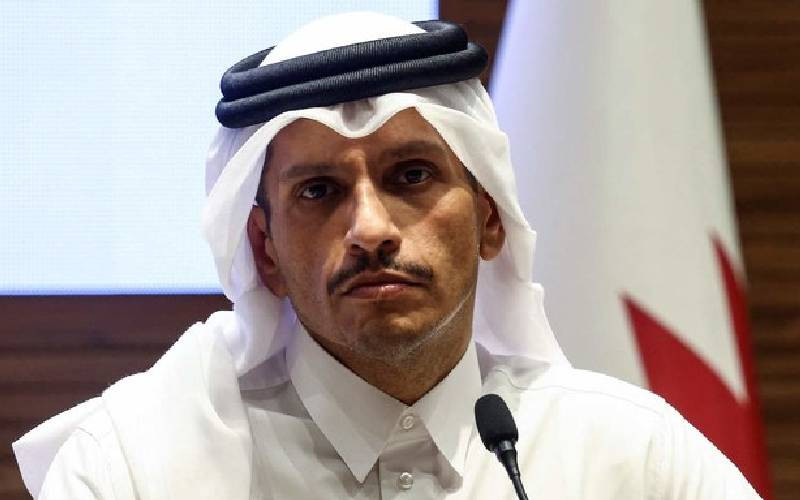
On June 24, 2016 Essar Energy Director Narendra Vachharajani led his company to a packed press conference at National Treasury. He had an announcement to make.
When he faced the camera, he became economical with words when asked why his firm had decided to sell its stake, pack and leave Kenya Petroleum Refinery Limited (KPRL) in the hands of Kenyan Government.
“In business, some projects work out, others do not. I do not want to go into details,” said Vachharajani clearly alluding that the July 2009 decision to acquire half of East African’s only oil refinery did not work.
Turning back the wheels of time and making a stop at the comments of the then President Jomo Kenyatta on evening of February 21, 1964, he would not believe his ears had he afforded the opportunity to grace this press conference at National Treasury.
As the Indian-based company, a subsidiary of Essar Oil Lt pocketed $5 million (Sh515.7 million) and retreated, National Treasury CS Henry Rotich had no clear picture of what next for the pipeline. “We are going to review whether the need for the refinery will be there or not,” Rotich told the press then.
The 1959 brain-child of colonial government, then 50-50 per cent owned by Shell and British Petroleum (BP) oil companies, that was called East African Oil Refineries Limited Incorporated, had hit a near dead end.
Yet, 53 years ago, Mzee Kenyatta, then the Prime Minister had told the country that it was going to be a ‘symbol of hope’ and ‘milestone in advancement of Kenya’s economy’.
As captured in The East African Standard of 1964, Mr Kenyatta told the country that the plant was a demonstration that his government would not allow Kenya to become the industrial or commercial protégé of any foreign country.
“I am fully aware of the fact that companies like this find it necessary to employ not only local people but also some experts from overseas,” said Kenyatta stressing that Kenyans would get priority in working at the refinery.
The inauguration of the refinery marked transition from reliance on imported petroleum products to a virtually complete reliance on local manufactures.
This was according to the then General Manager, only captured by The East African Standard as B.L.F Hubbard. “Embodied in the mass of complex and impersonal machinery which surrounds you is something of this new nation’s hope and aspirations,” he said.
“It represents technical advance and match of industrialisation in a hitherto primarily agricultural economy, a valuable saving in foreign exchange and substantial contribution of tax---,” Mr Hubbard spoke high of the refinery.
Economic losses
This bold picture never came to be. By the time of its closure, oil marketers had lost money, the economy had run into losses from this plant and the structure had also soaked in debts.
Stay informed. Subscribe to our newsletter
Oil marketing firms later on started boycotting purchases from the plant, blaming it on high cost and poor oil quality. They said the inefficiencies at the refinery created operational inefficiencies that cost them about Sh8.5 billion in losses.
Firms such as KenoKobil felt the impact in their financial statements as they impair the losses they had hoped government would foot. In 2013, Energy Regulatory Commission estimated that between December 2010 and April 2013, the economy had lost Sh13 billion due to inefficiencies at the refinery - about Sh15 million in losses a day.
The firm had been changing from one hand to another as shareholders who came on board pondered on how to turn it to what Mr Kenyatta and Mr Hubbard said it would do to the economy. In 1963, when the first complex was completed and commissioned, Esso and Caltex came on board as shareholders. Later in 1970, a grease plant was constructed and government bough 50 per cent shareholding a year later.
In 1983, it changed its name to Kenya Petroleum Refineries Limited (KPRL) but as Esso found the going tough. It sold out its shares in 1997. KPRL soldiered on as its laboratory got ISO certification a year later.
Then in 2009, Essar acquired 50 per cent shares from Shell, BP and Chevron. But like its predecessors, last year, it sold their stake in this supposed to be symbol of hope back to government.
 The Standard Group Plc is a
multi-media organization with investments in media platforms spanning newspaper
print operations, television, radio broadcasting, digital and online services. The
Standard Group is recognized as a leading multi-media house in Kenya with a key
influence in matters of national and international interest.
The Standard Group Plc is a
multi-media organization with investments in media platforms spanning newspaper
print operations, television, radio broadcasting, digital and online services. The
Standard Group is recognized as a leading multi-media house in Kenya with a key
influence in matters of national and international interest.
 The Standard Group Plc is a
multi-media organization with investments in media platforms spanning newspaper
print operations, television, radio broadcasting, digital and online services. The
Standard Group is recognized as a leading multi-media house in Kenya with a key
influence in matters of national and international interest.
The Standard Group Plc is a
multi-media organization with investments in media platforms spanning newspaper
print operations, television, radio broadcasting, digital and online services. The
Standard Group is recognized as a leading multi-media house in Kenya with a key
influence in matters of national and international interest.






